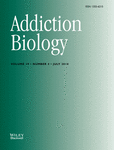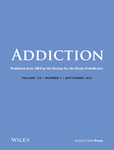Journal list menu
Export Citations
Download PDFs
Issue Information
REVIEW
Individual differences in cocaine addiction: maladaptive behavioural traits
- Pages: 517-528
- First Published: 25 January 2013
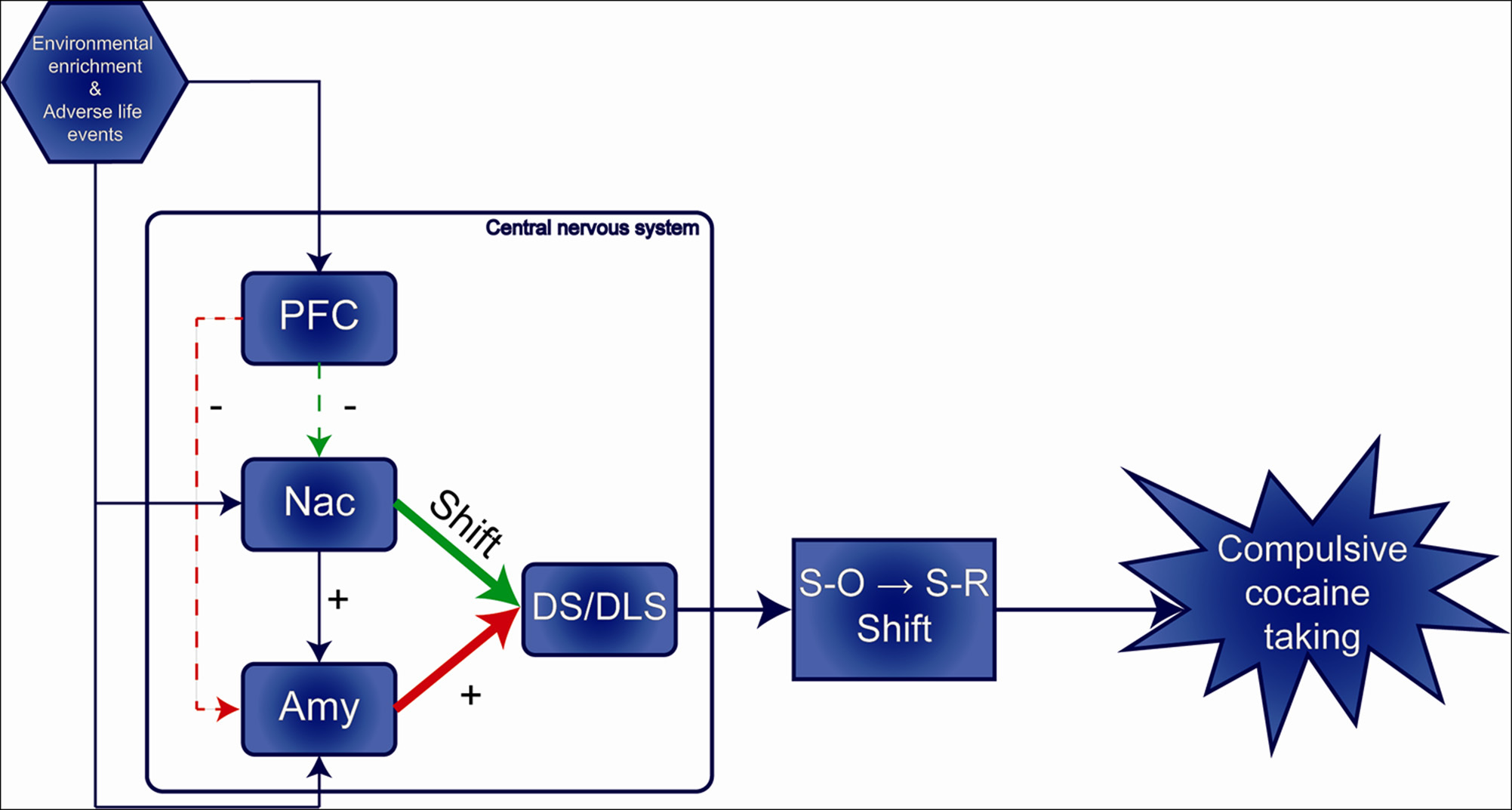
Cocaine use leads to addiction in only a subset of individuals, particularly those displaying high impulsivity and high anxiety. However, neither impulsivity nor anxiety are bad per se. We propose the new view that organisms flourish well when they fit their environment by trait and genotype. However, under non-fit conditions, the need to compensate the failure to deal with this environment increases, and, as a consequence, the functional use of rewarding drugs like cocaine may increase.
PRECLINICAL STUDIES
Time course of cocaine-induced behavioral and neurochemical plasticity
- Pages: 529-538
- First Published: 12 September 2012
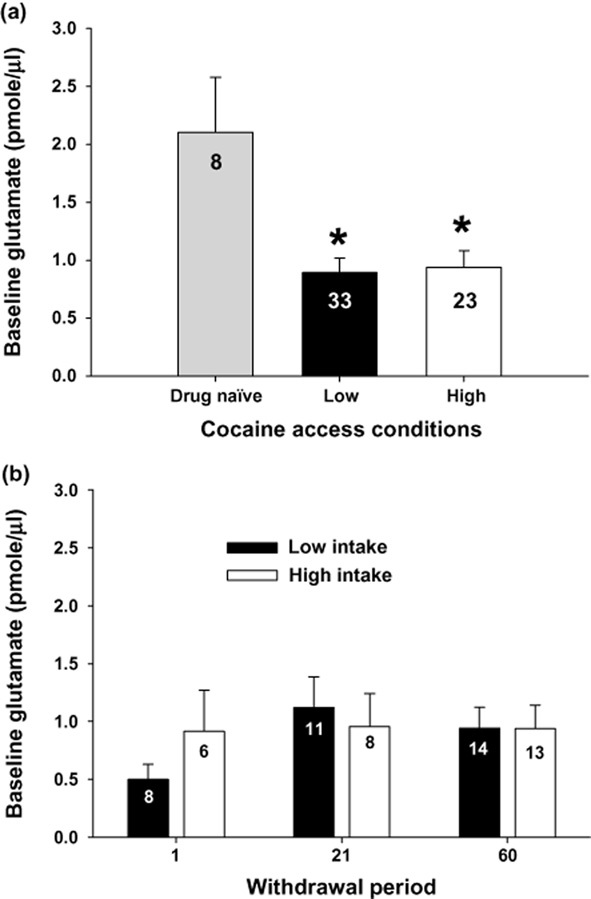
We examined the impact of access conditions during self-administration and length of withdrawal on glutamate levels in the nucleus accumbens and the magnitude of cocaine-induced reinstatement. Interestingly, high-cocaine intake rats exhibited augmented reinstatement at 1, 21, and 60 days of withdrawal, but failed to exhibit higher levels of cocaine-induced increases in extracellular glutamate relative to low-intake rats. Thus, augmented reinstatement in high-intake rats may not be due to relative differences in extracellular levels of glutamate in the nucleus accumbens.
Donepezil, an acetylcholinesterase inhibitor, attenuates nicotine self-administration and reinstatement of nicotine seeking in rats
- Pages: 539-551
- First Published: 12 December 2012
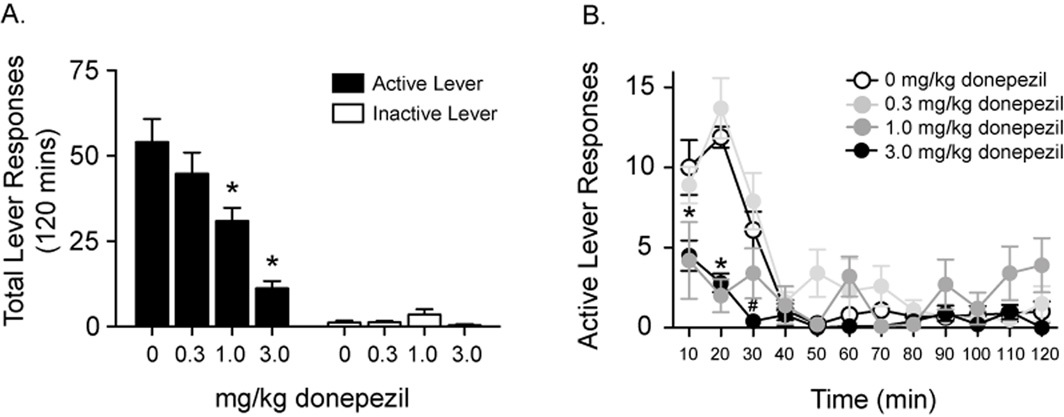
A growing literature indicates that cognitive deficits represent a core symptom of nicotine withdrawal that predict relapse during smoking abstinence. However, the effects of cognitive-enhancing medications on nicotine taking and seeking are not clear. Here, we show that systemic administration of the acetylcholinesterase inhibitor donepezil, which improves cognitive performance in smokers, attenuated nicotine self-administration and the reinstatement of nicotine-seeking behavior in rats. These results suggest that donepezil may prevent smoking relapse in abstinent human smokers.
The heritability of oxycodone reward and concomitant phenotypes in a LG/J × SM/J mouse advanced intercross line
- Pages: 552-561
- First Published: 12 December 2012
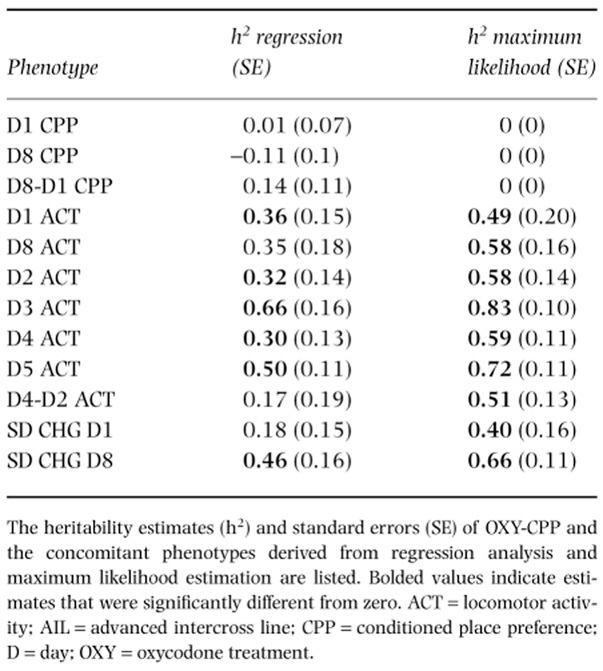
The conditioned place preference assay (CPP) is frequently used to study opioid reward in genetically engineered mice; however the contribution of natural genetic variation to opioid CPP is unknown. Here, oxycodone-induced CPP was not a significantly heritable trait in an advanced intercross line (AIL) derived from LG/J and SM/J strains. In contrast, other oxycodone-induced traits were heritable, including oxycodone-induced locomotor activity (D2 ACT, D4 ACT), locomotor sensitization (D4-D2 ACT), and transitions to the oxycodone-paired side during CPP (SD CHG D8).
Hippocampal neurogenesis protects against cocaine-primed relapse
- Pages: 562-574
- First Published: 24 December 2012
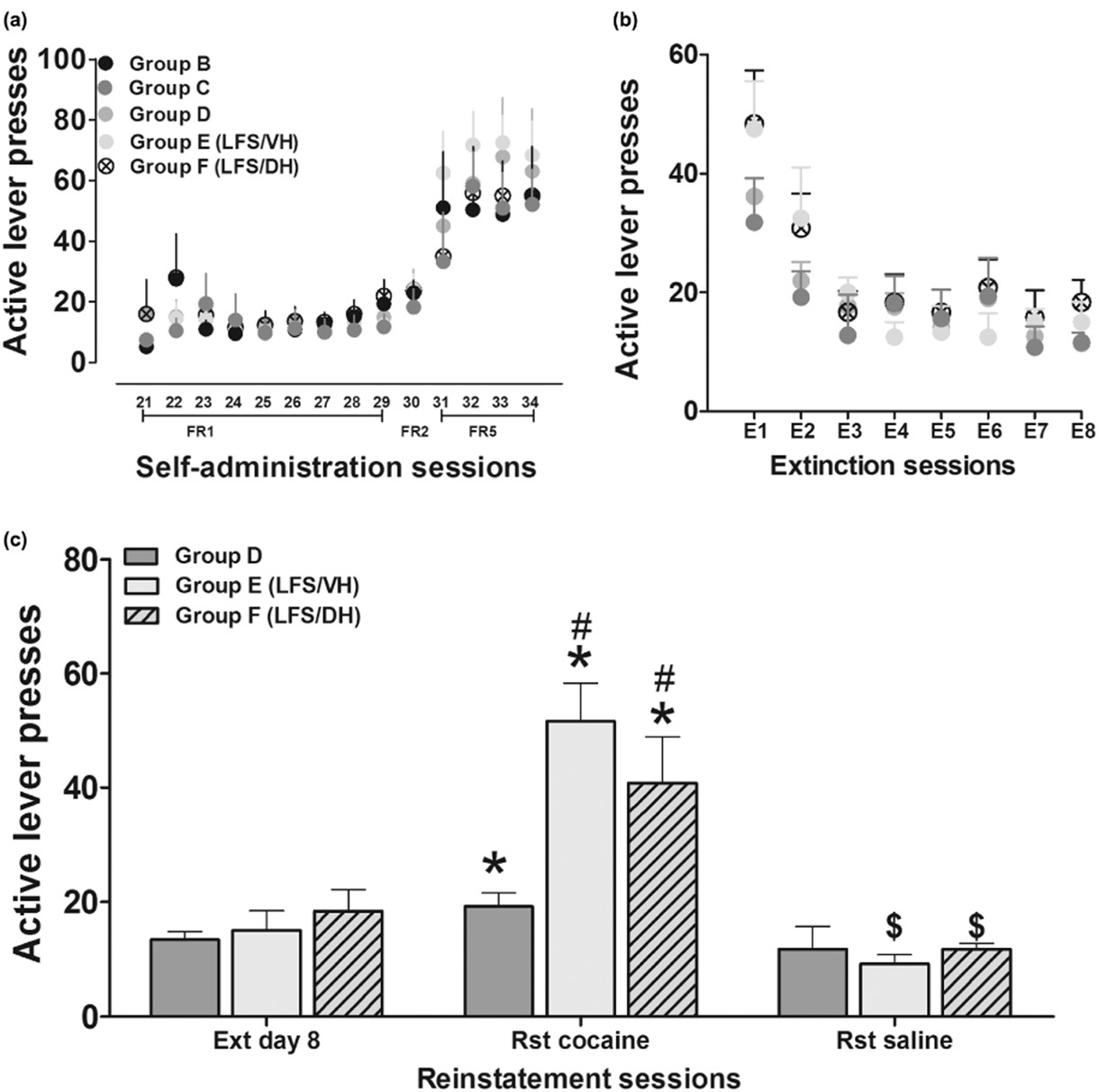
Low frequency stimulation (LFS) in the hippocampus during extinction did not alter extinction behavior, but enhanced cocaine-primed reinstatement. Cocaine self-administration reduced dentate gyrus neurogenesis, which was recovered by extinction. LFS during extinction prevented extinction-induced recovery of dentate gyrus neurogenesis and potentiated cocaine-induced reinstatement of drug seeking. These data suggest that newly born dentate gyrus neurons during withdrawal and extinction learning facilitate hippocampal networking that mediates extinction-induced inhibition of cocaine seeking and may play a key role in preventing relapse.
A non-rewarding, non-aversive buprenorphine/naltrexone combination attenuates drug-primed reinstatement to cocaine and morphine in rats in a conditioned place preference paradigm
- Pages: 575-586
- First Published: 14 December 2012
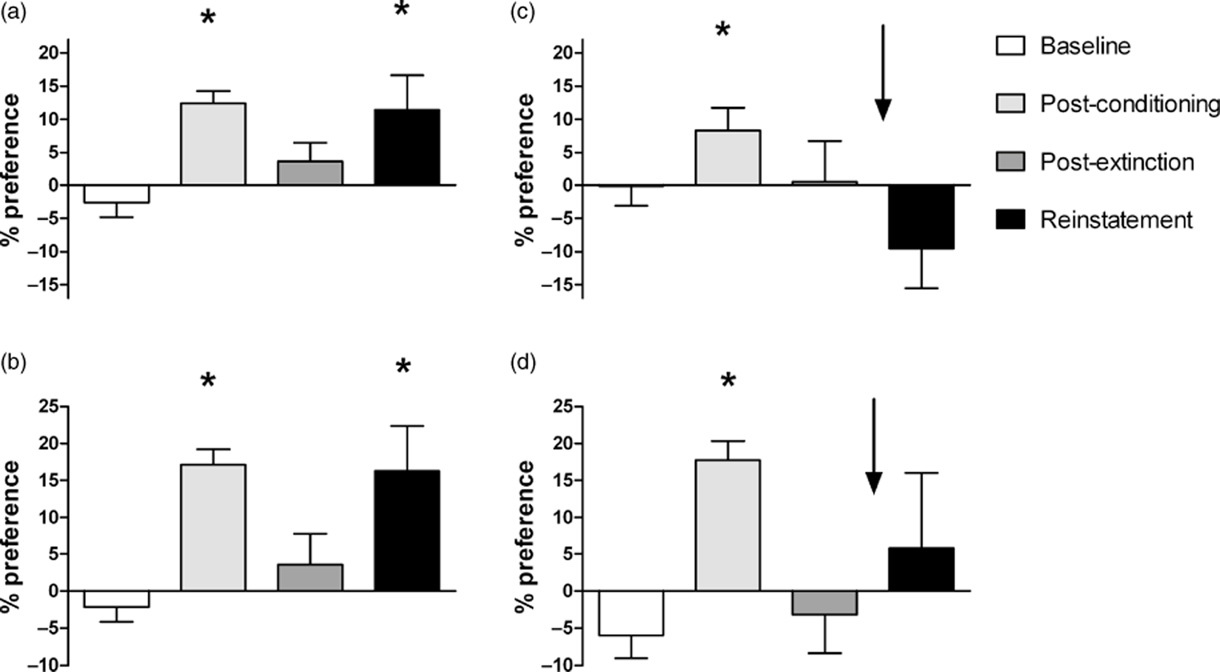
Clinical trials have suggested that a combination of buprenorphine and naltrexone might be effective as a treatment for opioid and cocaine addiction. In this rat study we find a ratio of buprenorphine/naltrexone that is neither aversive nor rewarding, and that attenuated drug-primed reinstatement to conditioned place preference to both morphine and cocaine. Further in vitro and in vivo studies characterised mu-opioid receptor occupancy by this drug combination.
Nicotine vapor inhalation escalates nicotine self-administration
- Pages: 587-592
- First Published: 14 December 2012
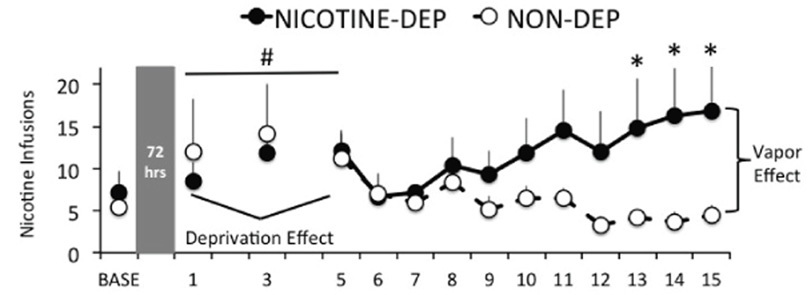
Humans escalate cigarette smoking over time, and an obstacle in pre-clinical nicotine addiction research has been the inability to produce escalated nicotine self-administration in rats. Rats were trained to respond for nicotine, then exposed to chronic intermittent nicotine vapor and tested for nicotine self-administration during withdrawal. Rats exhibited a nicotine deprivation effect during intermittent testing, and nicotine vapor-exposed rats escalated nicotine self-administration over time. Nicotine vapor produced somatic withdrawal, and air-nicotine concentrations approximated those experienced by human smokers.
Expression of HIV gp120 protein increases sensitivity to the rewarding properties of methamphetamine in mice
- Pages: 593-605
- First Published: 18 December 2012
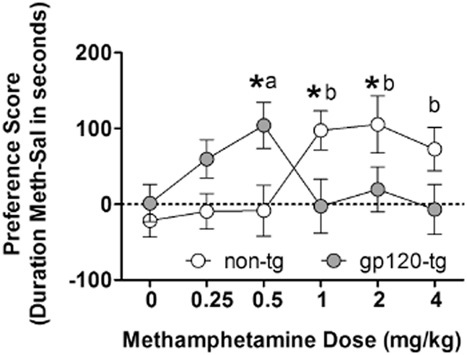
Methamphetamine abuse and human immunodeficiency virus (HIV) infection induce neuropathological changes in corticolimbic brain areas involved in reward and cognitive function. The HIV/gp120 protein induces neurodegeneration in mice, similar to HIV-induced pathology in humans. Gp120-expressing mice exhibited greater preference for methamphetamine and developed methamphetamine-induced conditioned place preference at lower methamphetamine doses compared with control mice. These data suggest that HIV-positive individuals may have increased sensitivity to methamphetamine, leading to high methamphetamine abuse potential in this population.
Intermittent access ethanol consumption dysregulates CRF function in the hypothalamus and is attenuated by the CRF-R1 antagonist, CP-376395
- Pages: 606-611
- First Published: 30 January 2013
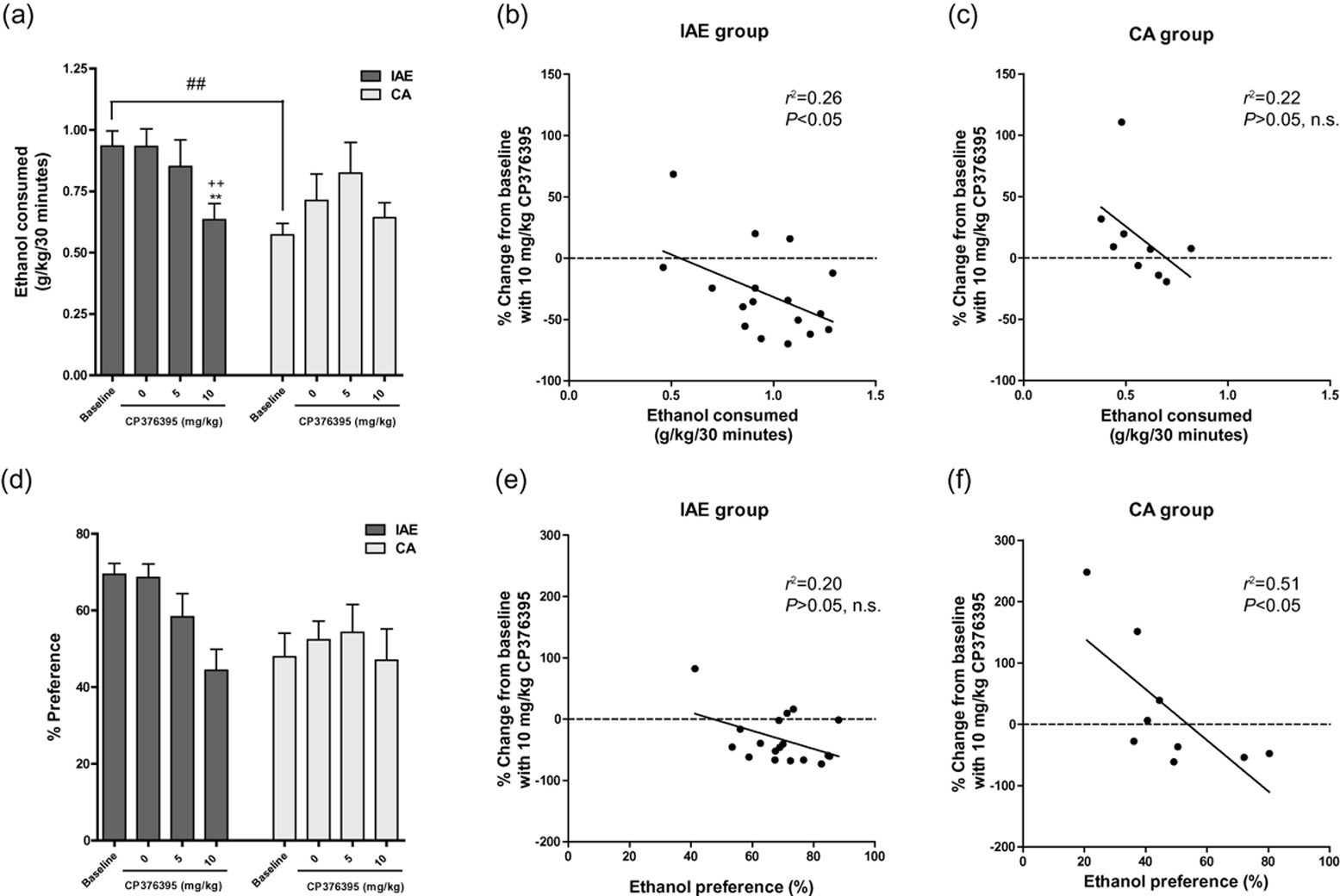
Corticotrophin-releasing factor (CRF) mediates stress responses and plays a role in ethanol-mediated behaviors. We show that the CRF receptor 1 (CRF-R1) antagonist, CP-376395 reduces 20% ethanol consumption in animals trained to consume ethanol using intermittent, but not using continuous schedule of access. We also show that CRF-mediated G-protein signaling in the hypothalamus of the intermittent drinkers is decreased when compared to controls suggesting an extrahypothalamic mechanism of action. This suggests CRF-R1 antagonists may be valid treatments for alcohol use disorders.
The dopamine beta-hydroxylase inhibitor nepicastat increases dopamine release and potentiates psychostimulant-induced dopamine release in the prefrontal cortex
- Pages: 612-622
- First Published: 07 January 2013
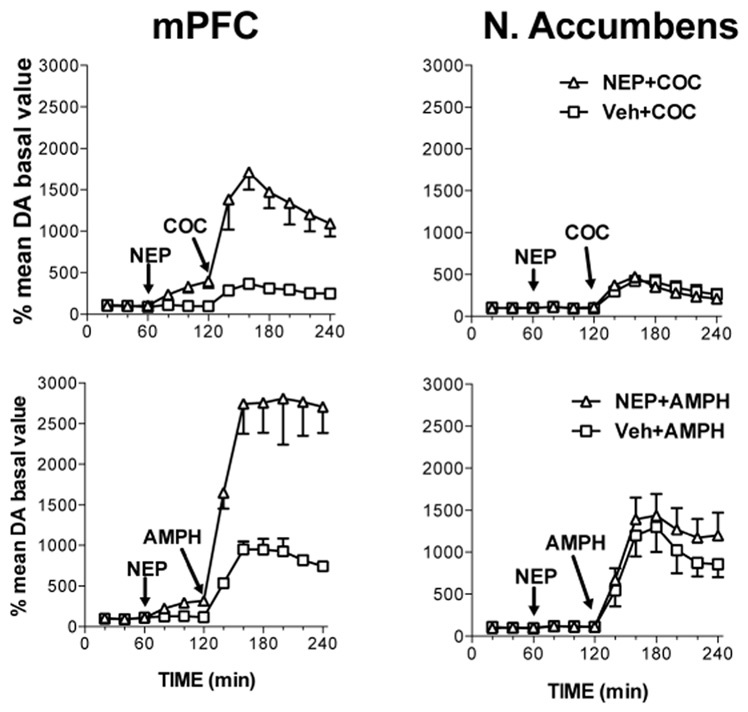
Inhibition of dopamine-β-hydroxylase suppresses cocaine self-administration reinstatement in rats. Pre-treatment with the selective inhibitor nepicastat decreased noradrenaline outflow induced by cocaine and amphetamine in the medial prefrontal cortex and in the nucleus accumbens, and dramatically potentiated dopamine outflow in the medial prefrontal cortex, but not in the nucleus accumbens. The effect on cortical dopamine level was mimicked by α2adrenergic antagonist administration and reverted by α2adrenergic agonist. The data suggest that noradrenaline tonically inhibit dopamine release in the medial prefrontal cortex.
GDNF is a novel ethanol-responsive gene in the VTA: implications for the development and persistence of excessive drinking
- Pages: 623-633
- First Published: 09 January 2013
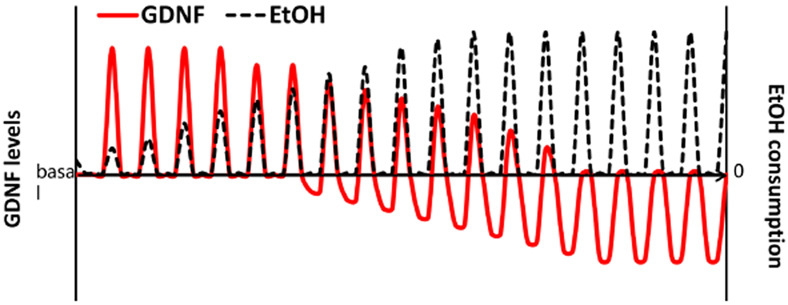
Glial cell line-derived neurotrophic factor (GDNF) is a potent inhibitor of ethanol consumption and relapse. We tested whether ethanol alters GDNF expression to determine how the endogenous growth factor may regulate ethanol consumption. We found that ethanol-mediated upregulation of GDNF during early drinking experiences protects against the development of excessive consumption. Chronic cycles of excessive consumption and withdrawal lowers basal levels of GDNF, suggesting a break down in this protective homeostatic response that contributes to the development of excessive consumption.
Withdrawal effect of chronic amphetamine exposure during adolescence on complex maze performance
- Pages: 634-642
- First Published: 03 February 2013
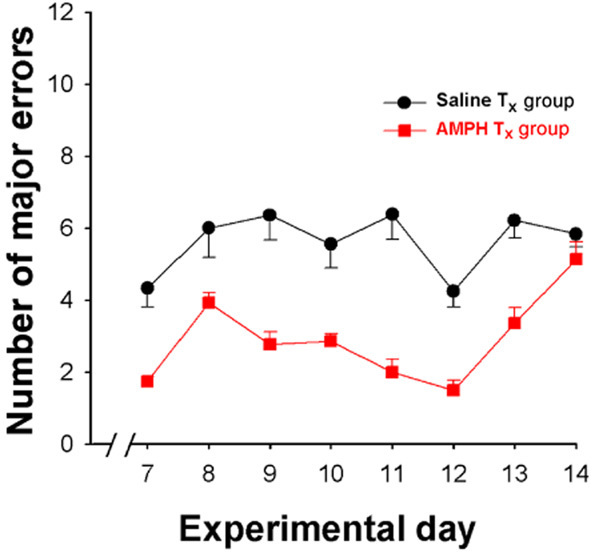
National survey data suggest a steady increase in the diagnosis of Attention Deficit/Hyperactivity Disorder (ADHD). As most children with ADHD take stimulant drugs, these experiments involved administration of 7.5 mg/kg, s.c. amphetamine to rodent subjects throughout adolescence followed by tests using a Stone 14-unit multiple T-maze. Results reveal amphetamine-treated subjects committed fewer major errors and had a significantly lower mean completion time. These findings suggest pharmacotherapy aimed at adolescent-phase treatment of ADHD does not provoke spatial memory deficits after drug withdrawal.
Association between the A107V substitution in the δ-opioid receptors and ethanol drinking in mice selected for high and low analgesia
- Pages: 643-651
- First Published: 10 January 2013
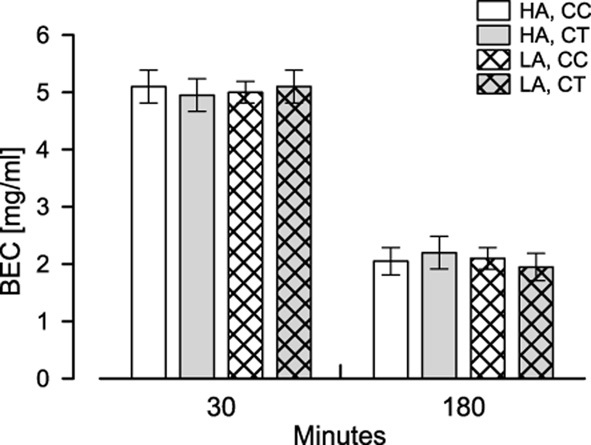
The opioid system plays an important role in the development of ethanol addiction in mouse lines bred for high (HA) and low (LA) stress-induced analgesia. A C320T mutation in the δ-opioid receptor leads to higher ethanol preference in CT than CC mice under chronic stress. Ethanol preference was much more pronounced in the LA line with decreased opioid system activity. Our results suggest that the δ-opioid receptor is involved in stress enhanced vulnerability to alcohol abuse and dependence.
Opioid system in the medial prefrontal cortex mediates binge-like eating
- Pages: 652-662
- First Published: 24 January 2013
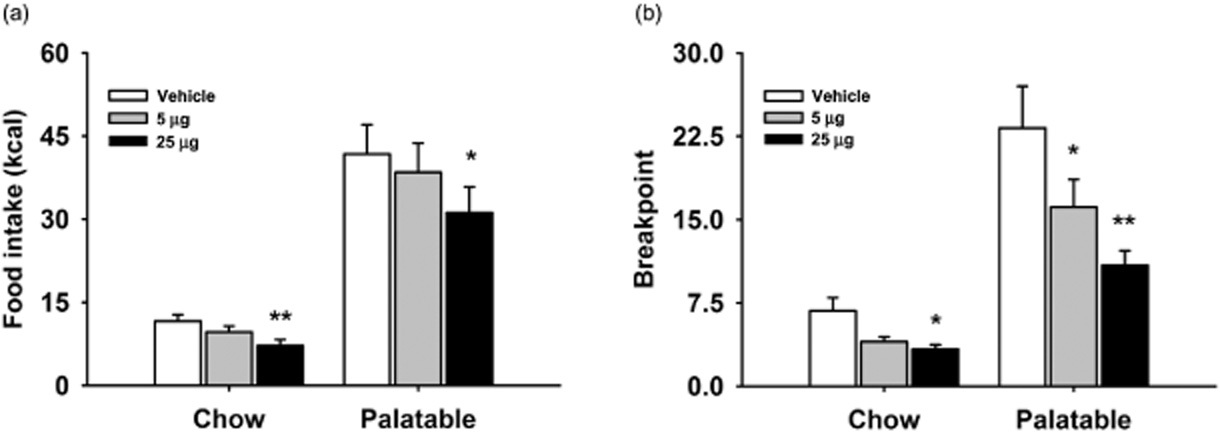
Here we show that the opioid receptor antagonist naltrexone, microinfused site-specifically into the medial prefrontal cortex (mPFC), selectively reduces binge eating as well as heightened motivation for a highly palatable sugary diet, without affecting regular chow responding. Furthermore, binge eating rats displayed a ∼100% increase in pro-opiomelanocortin and a ∼50% reduction in pro-dynorphin gene expression in the mPFC, compared to control rats. Our data suggest that neuroadaptations of the opioid system in the mPFC may be responsible for binge eating.
Relation between corticosterone and fear-related behavior in mice selectively bred for high or low alcohol preference
- Pages: 663-675
- First Published: 21 January 2013
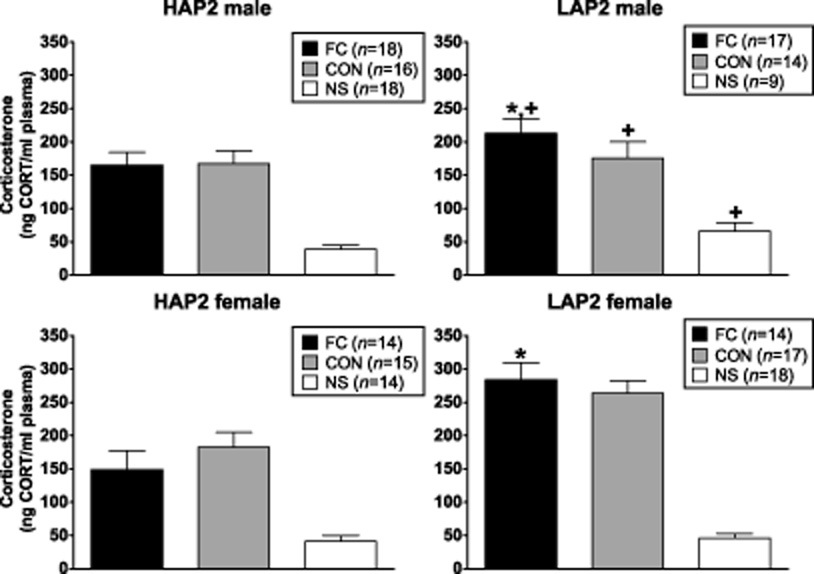
Blunted cortisol responses to stress or trauma have been linked with genetic (familial) risk for both alcoholism and post-traumatic stress disorder (PTSD). The relation between corticosterone (CORT) and fear –potentiated startle, a model used to study PTSD, was explored in mice selectively bred for high (HAP) or low (LAP) alcohol preference. The findings suggest that a blunted CORT response to stress may be a biological marker for greater susceptibility to develop PTSD in individuals with increased genetic risk for alcoholism.
Development of sensitization to methamphetamine in offspring prenatally exposed to morphine, methadone and buprenorphine
- Pages: 676-686
- First Published: 03 April 2013
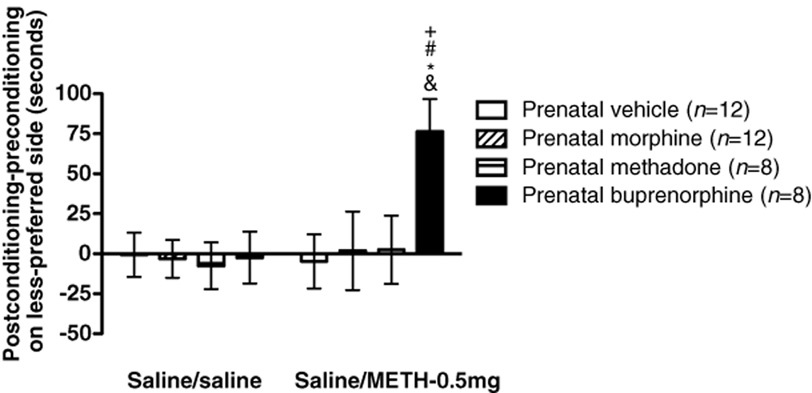
Heroin use among young women of reproductive age has drawn much attention around the world, but there is lack of information on the long-term effects of them. The current study demonstrates that dopamine D1R and its down-regulated cAMP signals in the nucleus accumbens are involved in enhancing METH-induced behavioral sensitization and conditioned place preference in the prenatally buprenorphine-exposed offspring. The study reveals that prenatal exposure to buprenorphine caused long-term effects on offspring and affected the dopaminergic system-related reward mechanism.
Ectopic hippocampal neurogenesis in adolescent male rats following alcohol dependence
- Pages: 687-699
- First Published: 11 July 2013
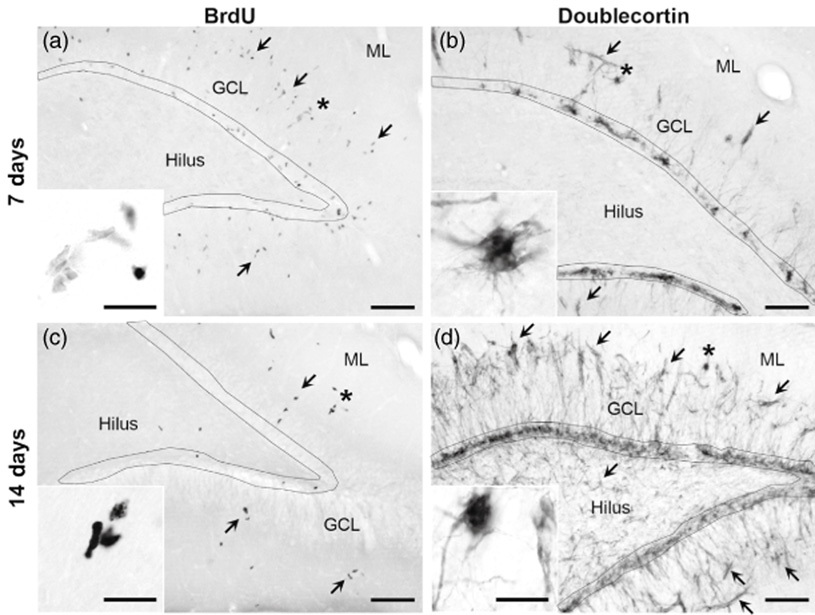
The adolescent hippocampus is highly vulnerable to alcohol, which may underlie their susceptibility to alcohol use disorders. As adult neurogenesis represents one way alcohol affects hippocampal function, we examined neurogenesis in adolescent rats following alcohol dependence. In abstinence, cell proliferation and neurogenesis were increased 2.2-fold and 1.6-fold respectively. Strikingly, ectopic neuroblasts were observed in severely withdrawing rats, an effect never described in adults. Ectopic neuroblasts impact hippocampal circuitry, potentially contributing to the increased vulnerability of the adolescent hippocampus to alcohol.
HUMAN GENETIC STUDIES
PTSD risk associated with a functional DRD2 polymorphism in heroin-dependent cases and controls is limited to amphetamine-dependent individuals
- Pages: 700-707
- First Published: 06 May 2013
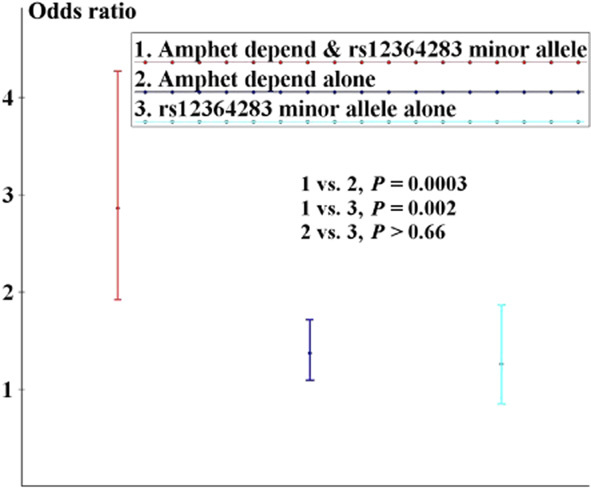
A candidate gene association study of posttraumatic stress disorder (PTSD) in trauma-exposed Comorbidity and Trauma Study participants (1343 heroin dependent cases and 406 neighborhood controls) found that a functional DRD2 promoter polymorphism (rs12364283) is associated with PTSD liability [OR 1.65 (1.27-2.15); p= 1.58 x 10-4] (not significant with correction for multiple comparisons). This association is largely limited to amphetamine dependent individuals in whom one or more copy of rs12364283 is associated with significant PTSD risk [OR 2.86 (1.92-4.27); p=2.6 x10-7].
Using genetic information from candidate gene and genome-wide association studies in risk prediction for alcohol dependence
- Pages: 708-721
- First Published: 30 January 2013
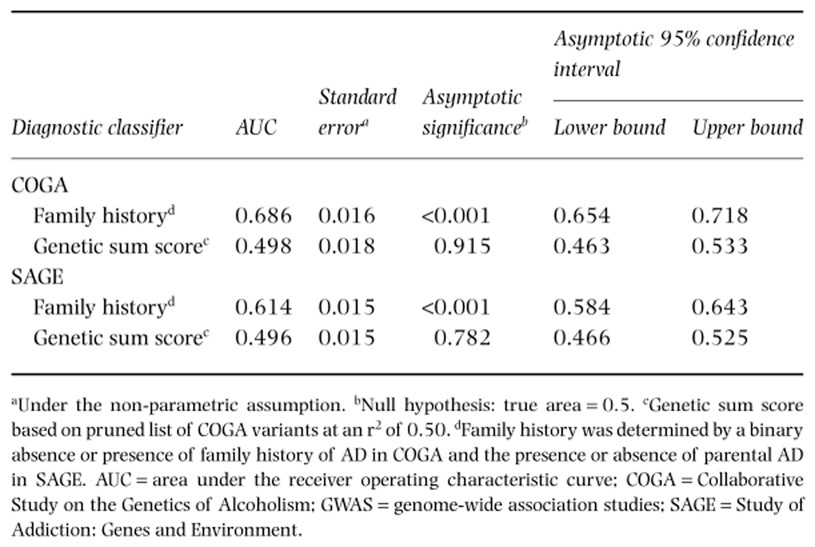
We examined the impact of multiple single nucleotide polymorphisms (SNPs) on risk prediction for alcohol dependence (AD). The predictive accuracy of genetic sum scores was assessed separately for SNPs associated with AD in candidate gene studies and SNPs from GWAS analyses that met varying P-value thresholds. Candidate gene sum scores did not exhibit significant predictive accuracy, but SNPs that met P-value thresholds of 0.01-0.50 in GWAS yielded significant, albeit low, predictive accuracy. Family history was the best predictor of AD.
HUMAN NEUROIMAGING STUDIES
Modulation of brain structure by catechol-O-methyltransferase Val158Met polymorphism in chronic cannabis users
- Pages: 722-732
- First Published: 14 January 2013
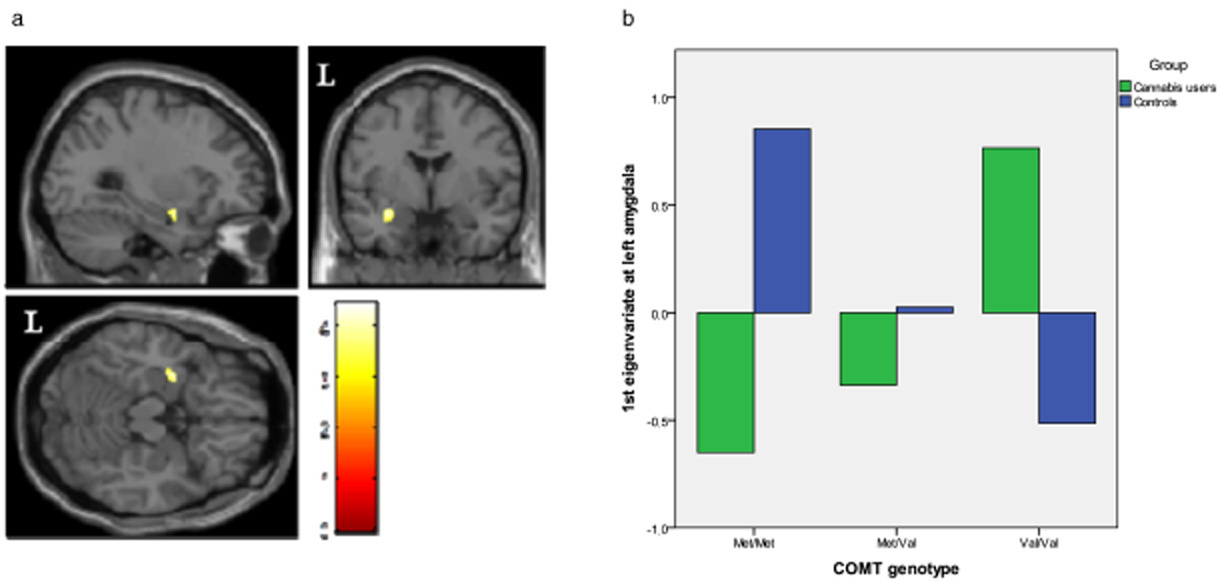
Neuroimaging studies have shown that chronic cannabis use may result in structural brain alterations. We measured the influence of the catechol-O-methyltransferase(COMT) genotype on the volume of four key brain regions in 29 early-onset chronic cannabis users and 28 matched non-using controls. The COMT variants influenced the volume of the bilateral ventral caudate nucleus and the left amygdala in both groups in opposite directions. Our findings support reports of neuroanatomical changes associated with cannabis use and, for the first time, reveal that these changes may be influenced by the COMT genotype.
Association of smoking with μ-opioid receptor availability before and during naltrexone blockade in alcohol-dependent subjects
- Pages: 733-742
- First Published: 18 December 2012
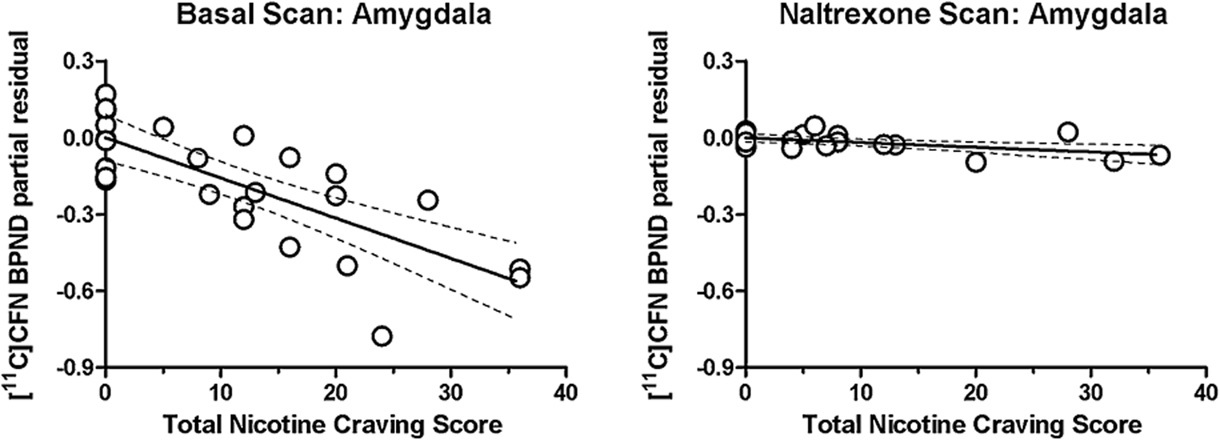
The current study examined whether severity of tobacco use and nicotine dependence is associated with mu-opioid receptor binding in 25 abstinent alcohol dependent (AD) subjects who completed [11C]carfentanil (CFN) Positron Emission Tomography (PET) imaging before and during treatment with naltrexone under an inpatient protocol. Higher cigarettes/day, nicotine dependence and craving were associated with lower basal CFN binding potential (BPND) across mesolimbic regions. This negative association was maintained during naltrexone treatment for nicotine dependence and cigarettes/day, but not for nicotine craving.
Dissociable brain signatures of choice conflict and immediate reward preferences in alcohol use disorders
- Pages: 743-753
- First Published: 12 December 2012
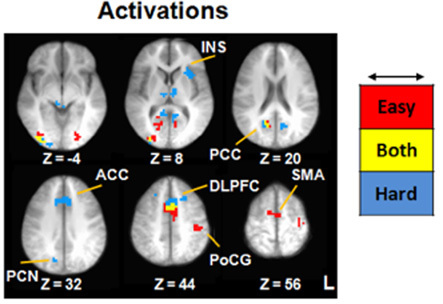
This study investigated the neural correlates of impulsive delay discounting in a sample of heavy drinkers with or without an alcohol use disorder (AUD). Discounting choices were associated with activation in the well-characterized circuitry supporting intertemporal choice. Moreover, AUD+ individuals exhibited greater impulsive choice and hyperactivation in several frontoparietal regions, perhaps indicating inefficient neural processing. This study provides further clarification of the brain systems supporting discounting in the context of AUDs.




